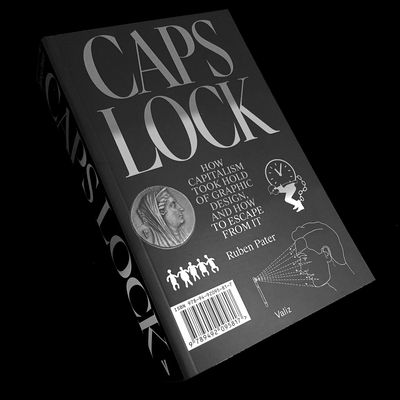Presentation 'How capitalism and design are intertwined and what alternatives exist?'

What: Presentation: How capitalism and design are intertwined and what alternatives exist?
With: Ruben Pater
Where: CUKRARNA GALLERY, Poljanski nasip 40, 1000 Ljubljana, Slovenia
When: Wednesday, October 5 at 6:00 PM (CEST)
Organized by: Indigo Festival, Ljubljana
Admission: Free
Ruben Pater will give a presentation on Wednesday 5 October as part of the Indigo Festival. During this lecture he will discuss how capitalism and design are intertwined.
Capitalism could not exist without the coins, bills, documents, images, interfaces, branding and advertisements. Even anti-consumerist strategies such as social design and speculative design are appropriated within capitalist societies to serve economic growth. It seems that design is locked in a system of exploitation and profit, a cycle that promotes inequality and the depletion of natural resources. How does the training and professional practice of (graphic) designers support the market economy and how is design practice trapped in that system? How can we design for degrowth instead of corporate profits? We look at examples of radical design collectives working on alternatives between design, community and reciprocity, based on the content of his latest book, CAPS LOCK. The official language of this event is English.
Indigo Festival
This lecture is part of the program of Indigo Festival. Indigo is a festival platform that brings together contemporary movements in art, culture, design, media, music and theatre. The theme of this edition of the festival is 'Grapes of Wrath' after John Steinbeck. Despite being published in 1939, the themes of this book feel contemporary; people fleeing ecological disasters, debt and corporate extortion, as well as solidarity and the strength of communities.
Decades of neoliberalism followed by two years of Covid have led to a massive accumulation of affective excess that shows and feels every day. It manifests itself in two seemingly opposite reactions: an excess of fatigue, exhaustion and depression; and an excess of anger and frustration. Both have now reached the proportions of a pandemic more dangerous and widespread than Covid. They are not real opposites, however, but passive and active expressions of the same excesses: depression can be understood as anger stuck in the throat, turned inward, paralyzing and blocking; while anger can be understood as helplessness directed outward, frantically seeking an outlet. These are not individual or psychological feelings, but socially generated, socially conditioned affects, responses to a multitude of accumulated contradictions.
The anger is justified, but it seems to find no positive form of political expression, with the result that it appears dangerously in anti-politics: new populisms exploiting and manipulating it and using it to stir up even more divisions and create new figures. producing obscene master, further deepening the contradictions that led to this situation in the first place. How should we think about the danger of this inarticulate anger, this accumulated anger lurking in the background?
What kind of collectivity can we imagine if we want to intercept the grapes of wrath and make them bear fruit in a different kind of society? The question takes on an ominous undertone when we consider that this epic novel was published just before the outbreak of the Great War.
About Ruben Pater
Under the name Untold Stories, Ruben Pater creates visual stories that support solidarity, justice and equality. This starts as a collaboration with other disciplines to create new perspectives on complex social and political issues. The goal is to create visual stories that reach a wide audience through image, print media, interactive media and film. His "Drone Survival Guide" (2013) received worldwide attention as a discussion piece about military drones. In his book The Politics of Design (2016) he looks at the responsibilities of designers in visual culture. His latest book CAPS LOCK (2021) is a reference work that shows in clear language and visual examples how graphic design and capitalism are inextricably linked.
